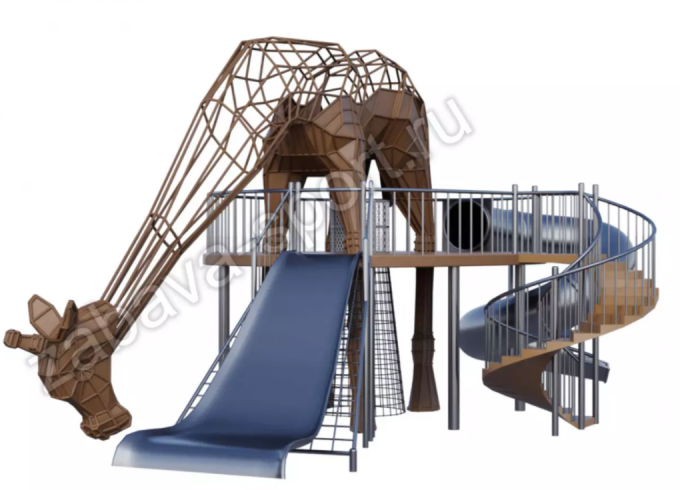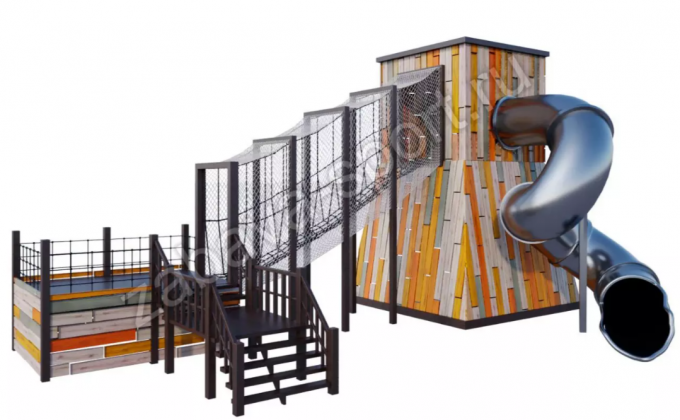Playgrounds have many purposes and positive impacts on children's development and well-being, promote the physical development of children. Here they can run, jump, climb, swing and develop coordination of movements. Children interact with each other on playgrounds, learn to share, collaborate and develop communication skills. Children play on the playgrounds, where they can make their fantasies come true, create role-playing games and develop creative thinking. Some playgrounds include elements, promoting education. These could be panels with numbers, letters, world maps and other educational materials. Playgrounds motivate children to be physically active and teach them to value an active lifestyle. Playgrounds provide children with a safe place to play and have fun., which helps prevent risks, associated with playing outside or in unfavorable conditions. Generally, playgrounds play an important role in physical, social and psychological development of children, and also provide them with a place to be happy., creativity and learning.
Playground safety
Designing safe children's play areas is a critical issue, which should take into account both the design and construction of the playground, and many other aspects in detail https://www.zabava-sport.ru/
Here are some important steps and factors, things to consider when designing a safe children's play area:
- Appropriate local codes should be followed, national and international safety standards, such as EN 1176 и ASTM F1487, to provide, that the playground design meets safety requirements.
- The right choice of materials: Use only high quality materials, which are weather resistant, are non-toxic and safe for children's skin.
- Suitable soft coverings: Install soft surfaces, such as crumb rubber, sand or artificial grass, to prevent injuries from falls.
- Adequate inspection and maintenance: Regularly check the condition of all elements of the playground and maintain them in good condition. Correct potentially dangerous defects immediately.
- Design without sharp corners or edges: Avoid sharp corners, edges and protruding parts, which could cause injury.
- Safe heights: Make, what is the height of the slides, swings and other elements comply with age restrictions and ensure safe use.
- Adequate space: Take care, so that there is enough space between the elements of the playground, to avoid collisions and additional dangers.
- Safe play structures: Make, that the design and details of the play structures are safe and well secured.
- ADA Compliant: Consider the requirements of the American Fair Access Act (ADA) to ensure the accessibility of the playground for children with disabilities.
- Rule Warning and Supervision: Post signs with rules and guidelines for safe play, and provide adult supervision on site.
Designing safe children's play areas requires a collaborative effort among designers, engineers and security specialists. Children's safety should be the highest priority when creating play areas.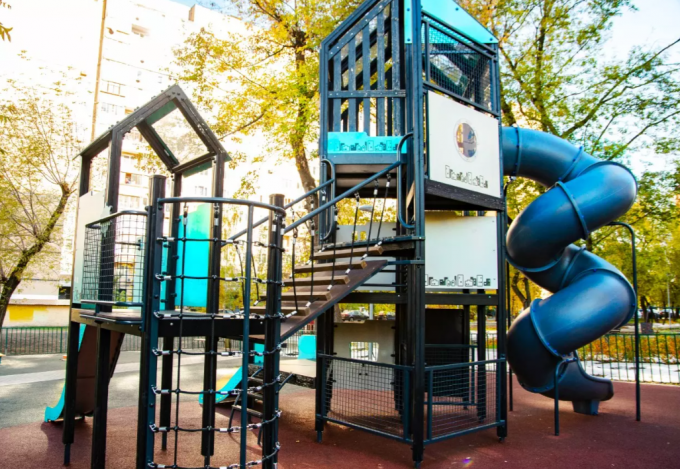
Creation of a unique children's playground
Unique playgrounds are often innovative, creative and interesting places for children to have fun and learn.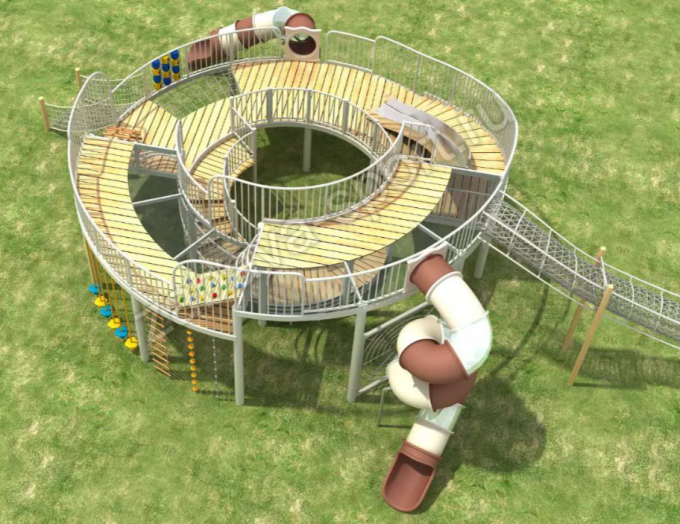
Here are some examples of unique playgrounds:
- Children's playground in the style of fantasy: Can be made in the form of a spaceship, of the castle, fantasy city or other themed concept. These playgrounds allow children to role-play and immerse themselves in imaginary worlds.
- Music venue: Equipped with musical instruments, such as xylophones, drums and metal panels, which children can use to create music and experiment with sound.
- Ecological site: Focuses on teaching children about environmental protection and sustainable development. Elements can be placed here, environmental related, such as plants, garden plots and rainwater harvesting systems.
- Arts and crafts area: Allows children to express themselves creatively through painting, drawing, sculpting, crafts and other arts. Equipment includes drawing planes, sculptures and other materials.
- Adaptive sites: Designed like this, so that children with different physical characteristics can play and interact. There could be an inclusive swing here, special access devices and other elements.
- Adventure playground: Contains elements for active adventures, such as wire ropes, creepers, climbing walls and other tools to develop physical skills and courage.
- Sites for scientific learning: Equipped with interactive elements, allowing children to explore science and technology. May include microscopes, planet models and other educational tools.
- Water play area: Contains fountains, cascade, water play areas and other water features, giving children the opportunity to play with water.
Unique playgrounds promote a variety of play experiences and develop different skills in children, from imagination and creativity to physical activity and education.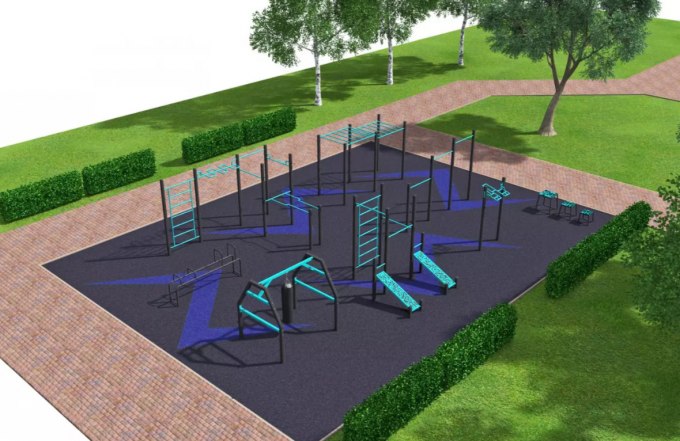
Creation of children's play complexes
Children's play complex (SEC) is a specially designed and equipped area or structure, designed for children's entertainment and active pastime. DIC provides children with the opportunity to play, get physically active, socialize and develop.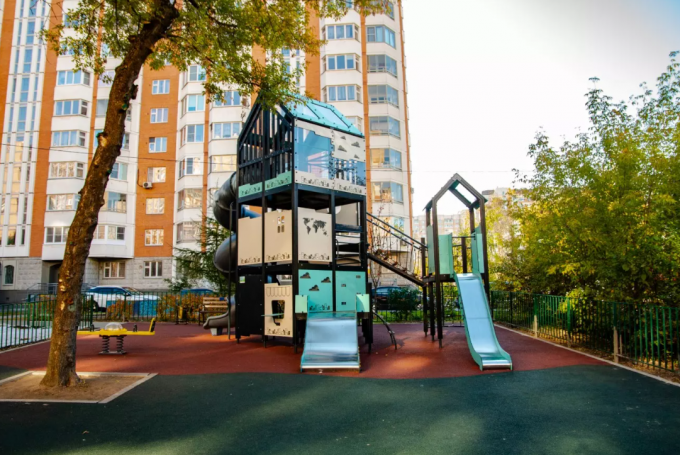
Typically, such a complex includes various elements of gaming infrastructure, such as:
- Gorki: Includes different types of slides, including swings and slides, demanding-slides, spiral slides, etc.. d.
- Swing: Swings for children of different ages, including swing chairs and regular swings.
- Stairs and tunnels: Suitable for play and active activities.
- Springboards: Soft springboards, on which children can jump and develop coordination of movements.
- Sandboxes: A place, where children can play in the sand and build sand castles.
- Nets and rope structures: Allow children to climb and develop strength and balance.
- Game panels: These are usually interactive structures with different elements for play and learning..
- Benches and tables for parents: A place, where parents can relax and keep an eye on their children.
Children's play complexes can be installed indoors (eg, in shopping centers or cafes), and on the street (in parks, children's playgrounds, etc.. d.). They contribute to the physical development of children, improving socialization and developing coordination of movements.
Unique playgrounds
